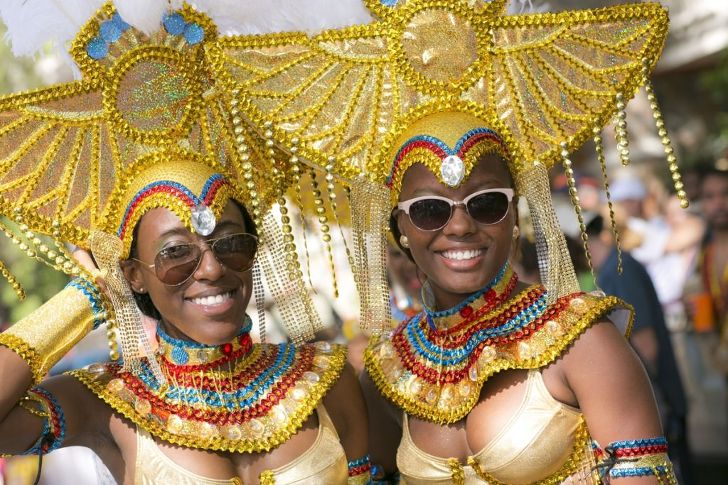The roots of Caribbean carnivals can be traced back to European pre-Lenten festivities featuring vibrant masquerade processions. European settlers brought the tradition to Caribbean colonies where it blended with African and Creole customs. After the abolition of slavery in the Caribbean, many former European colonies moved the Carnival season to commemorate Emancipation Day.
Caribbean countries that used to be part of the British Empire celebrate Emancipation Day on the first August of Monday in honor of the Slavery Abolition Act 1833. However, St. John never belonged to the British. Instead, it was part of the Danish West Indies alongside its neighboring islands of Saint Thomas and Saint Croix. Slavery in the Danish West Indies was abolished on July 3, 1848. Alongside Emancipation Day, St. John Festival commemorates U.S. Independence Day, as the island is now part of an unincorporated territory of the United States.
Masquerade type events were first held on Saint John in the early 20th century when the island was still owned by the Danish. The first official St. John Festival took place in 1945. A group of revelers in bright costumes gathered together in Cruz Bay, paraded through the streets and shared a bounty of food.
Early Carnivals lasted for one day only and didn’t include any nighttime events. In the 1960s, the Festival began to grow. Its program expanded to include the St. John Queen Pageant, originally called Miss Independence, and a food fair.
The present-day St. John Festival lasts for a month. It begins in late May or early June and culminates on Emancipation Day (July 3) and Independence Day (July 4). While each year has a different theme and somewhat different schedule, the month leading up to the main event is filled with steel pan performances, pageants and other events that aim to highlight the rich culture of the Caribbean.
Of course, the most colorful and anticipated events take place during the final week of the Festival. They include the Miss St. John Festival Queen pageant, the parade featuring established troupes in vibrant costumes and involving both adults and children, the Festival Village, and the Food Fair. The Village is the heart of Carnival, with its numerous booth representing local communities and selling foods from all over the Caribbean, amusement park rides, and other entertainment.
In 2020, the event was held online due to the coronavirus pandemic.

Photo: stjohnfestival.org




